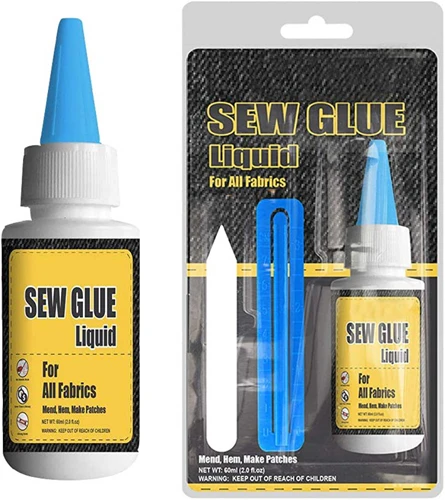Accidents happen, and sometimes they come in the form of nail glue spills on your cherished wood surfaces. Understanding how to tackle this sticky situation can help preserve your furniture’s appearance and integrity. In this comprehensive guide, we’ll explore effective methods to remove nail glue from wood and restore your furniture to its former glory.
Understanding Nail Adhesive on Wood Surfaces
Nail adhesive is designed to be incredibly durable and long-lasting, which is great for its intended purpose but not so much when it ends up on wood surfaces. The bond it forms with wood can be quite tenacious, making removal a delicate process to avoid damaging the finish or the wood itself.
Essential Tools and Materials for Nail Glue Removal
Gathering the right tools and materials is crucial before you begin the nail glue removal process. These items will help you effectively and safely clean nail glue off wood.
What You’ll Need for DIY Nail Glue Removal
- Plastic putty knife or credit card
- Cotton balls or clean, soft cloths
- Acetone or nail polish remover with acetone
- Wood polish or mineral oil
- Fine-grit sandpaper (optional)
Safe Nail Glue Removal Tips
Before diving into the removal process, it’s important to take some safety precautions. These nail glue removal tips ensure that both you and your wood surfaces stay protected.
Precautions for Nail Glue Removal from Wood
Always work in a well-ventilated area when using products like acetone, and wear gloves to protect your skin. Test any solvent on a small, inconspicuous area of the wood first to check for any adverse reactions.
Step-by-Step Guide to Clean Nail Glue off Wood
With the right approach, you can tackle the task of removing nail adhesive on wood without causing damage. Here’s a step-by-step guide to help you through the process.
Step 1: Gently Scrape Off Excess Nail Glue
Using a plastic putty knife or an old credit card, carefully scrape away as much of the excess nail glue as you can. Be gentle to avoid scratching the wood surface.
Step 2: Apply Acetone or Nail Polish Remover
Moisten a cotton ball or cloth with acetone or nail polish remover and gently dab at the remaining glue. Do not rub, as this can spread the glue or damage the finish.
Step 3: Wipe and Clean the Affected Area
Once the glue has softened, use a clean cloth to wipe away the residue. Repeat the process with fresh acetone if necessary until the glue is completely removed.
Step 4: Buff and Restore the Wood Surface
After the glue is gone, buff the area with a clean, dry cloth. If the wood looks dry or the finish appears dull, apply a wood polish or mineral oil to restore its luster.
Home Remedies for Nail Glue Removal
If you prefer to use less harsh chemicals or if you’re in a pinch, there are household items that can aid in DIY nail glue removal.
Using Common Household Items to Remove Nail Glue
- Warm, soapy water can help soften the glue for easier removal.
- Vinegar or rubbing alcohol can also be effective solvents.
- For a gentler approach, try using a hairdryer to warm the glue and make it more pliable.
Advanced Techniques to Get Nail Glue Off Furniture
For particularly stubborn nail glue spots, you might need to employ more advanced techniques to get nail glue off furniture without causing damage.
Using Heat or Commercial Products for Tough Glue Spots
Applying a heat gun or hairdryer on a low setting can soften the nail glue, making it easier to scrape off. For glue that resists all other methods, consider using a commercial adhesive remover specifically designed for wood surfaces. Always follow the manufacturer’s instructions closely.
Cleaning Wood Surfaces Post Nail Glue Removal
Once the nail glue has been successfully removed, it’s important to clean the wood surface to remove any residual solvent and prepare it for any refinishing necessary.
Restoring Wood Finish After Nail Glue Removal
Clean the area with a damp cloth to remove any remaining acetone or solvent. Once dry, assess the finish. If the wood needs to be refinished, apply a matching stain or sealant according to the wood type and existing finish.
Conclusion and Additional Nail Glue Removal Tips
Successfully cleaning wood surfaces of nail glue can be a satisfying DIY task. With the right approach and patience, you can restore your furniture to its original condition.
When it comes to DIY and crafting mishaps, dealing with stubborn glue residue is a common frustration. If you’ve accidentally dripped nail glue on your wooden surfaces, don’t worry, we have a guide on how to get nail glue off wood that will help you restore your furniture or floors to their former glory. But perhaps you’re facing different kinds of glue challenges? For those sticky situations involving tape residue, our article on how to get tape glue off wood offers practical solutions. And if you’re working with materials other than wood, such as plastic, and need to remove nail glue, be sure to read our tips on how to get nail glue off of plastic. Each guide provides step-by-step instructions to tackle the stickiest of problems!
Preventive Measures and Maintaining Wood Surfaces
To prevent future accidents, always use nail glue with caution and keep it away from wood surfaces. Regular maintenance, including cleaning and polishing your wood furniture, can help keep it in top condition and more resistant to spills. Remember these tips, and you’ll be prepared to handle nail glue mishaps with confidence.


